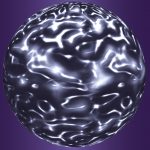Link to Pubmed [PMID] – 31336079
Curr. Biol. 2019 Jul;29(14):R671-R677
In 1955, the biologist and Nobel Prize laureate Christian de Duve discovered that cells possess specialized organelles filled with hydrolytic enzymes and he called these organelles lysosomes. At the same time, electron microscopy studies by Novikoff and colleagues showed that intracellular dense bodies, which later turned out to be lysosomes, contain cytoplasmic components. Together, these groundbreaking observations revealed that cells can deliver cytoplasmic components to lysosomes for degradation. The hallmark of this degradative process, which de Duve called autophagy, is the formation of double-membrane-limited vesicles. Further morphological characterization of these vesicles (autophagosomes) revealed that they mainly contain bulk cytoplasm. Although this suggested that autophagy leads to a non-selective degradation of cytoplasmic material, de Duve anticipated that a regulated and selective type of this pathway must also exist. Today we know that, under normal conditions, macroautophagy is a highly selective pathway that sequesters damaged or superfluous material from the cytoplasm through the formation of double-membrane-limited autophagosomes. Upon fusion with lysosomes, the content of autophagosomes is degraded and the resulting building blocks are released into the cytoplasm. However, in response to cytotoxic stress or starvation, cells start to produce autophagosomes that capture bulk cytoplasm non-selectively. This stress response is essential for cells to survive adverse environmental conditions, whereas the selective sequestration of cargo is important to maintain cellular homeostasis.

